The Mark Twain House & Museum
Introduction
Text-to-speech Audio
The Mark Twain House & Museum is a National Historic Landmark and the former home of one of the most celebrated authors in American history, Samuel Clemens aka Mark Twain (1835-1910). Twain and his family lived in the building from 1870 to 1891. In addition to publishing books, Twain was a journalist, lecturer, entrepreneur, and inventor known for his complex humor and memorable characters. Much of his work explored societal issues related to poverty and class stratification. Twain wrote many of his most important works while living here, including classics like The Adventures of Tom Sawyer (1876), The Prince and the Pauper (1881), and The Adventures of Huckleberry Finn (1884). The former home served as a school before being remodeled to apartments, but thanks to Twain's fame and the continued interest of the reading public, the former home was restored and reopened as a museum that offers exhibits, events, and tours along with educational programs that allow visitors to learn about Twain’s life and literary legacy.
Images
The Mark Twain House located in Hartford, CT, home of Samuel Clemens from 1874-1891
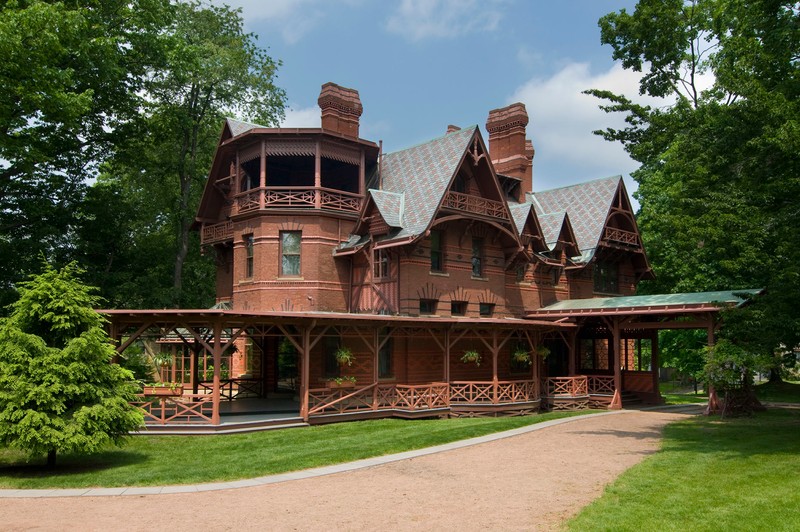
Entrance Hall: Inspiration for the design was drawn from Middle Eastern and Asian cultures
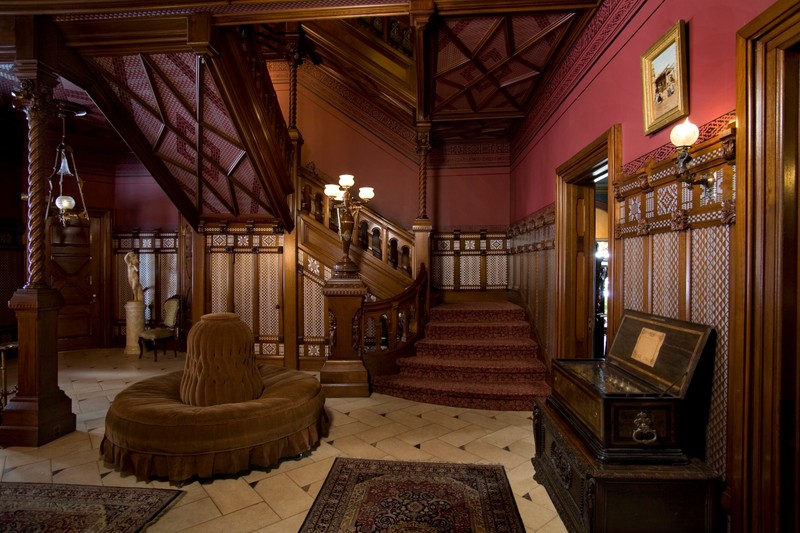
The Dining Room: Most meals were eaten here from small family dinners to small dinner parties
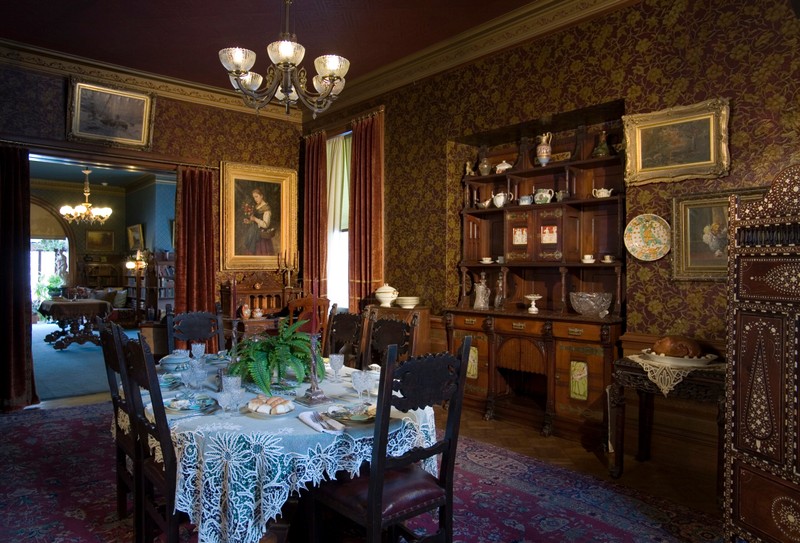
The Drawing Room: The furniture and chandelier belonged to the Clemens'
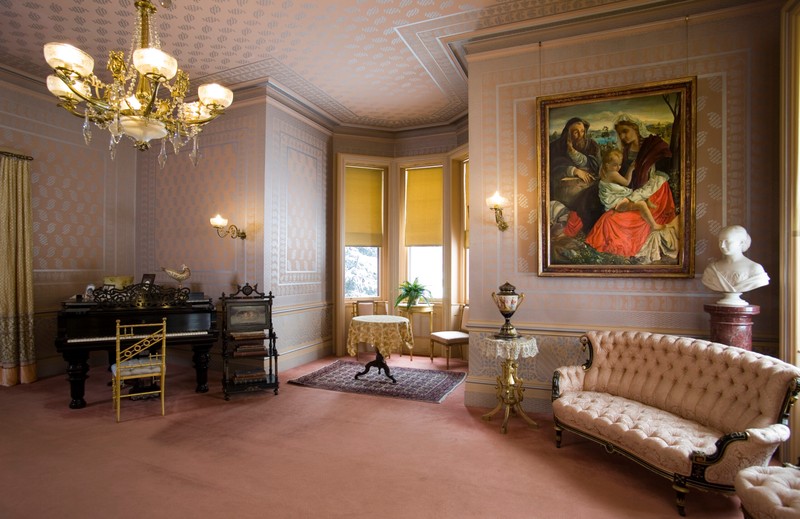
The Master Bedroom: The Italian bed followed Twain his through his adulthood, him even dying in the bed in 1910
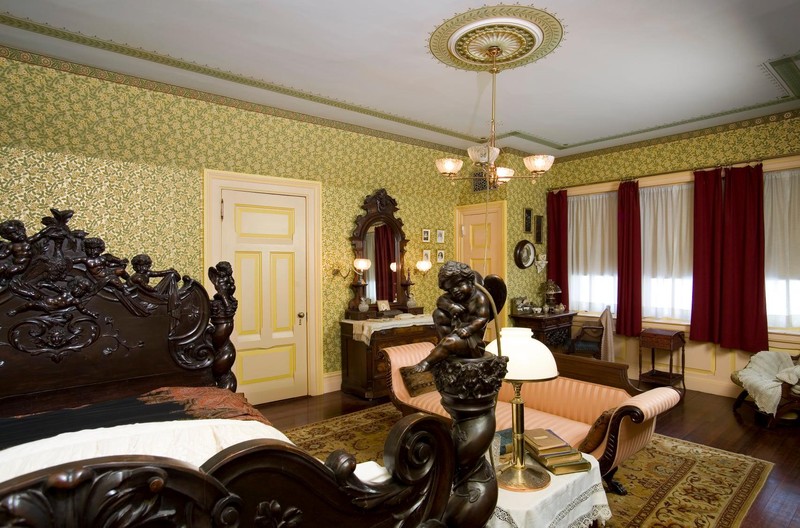
The School Room: Served as a playroom and classroom for his daughters, who were taught by their mother

The Nursery: Served as Clara and Jean's room, the wallpaper illustrating the nursery rhyme “Ye Frog He Would A-Wooing Go”
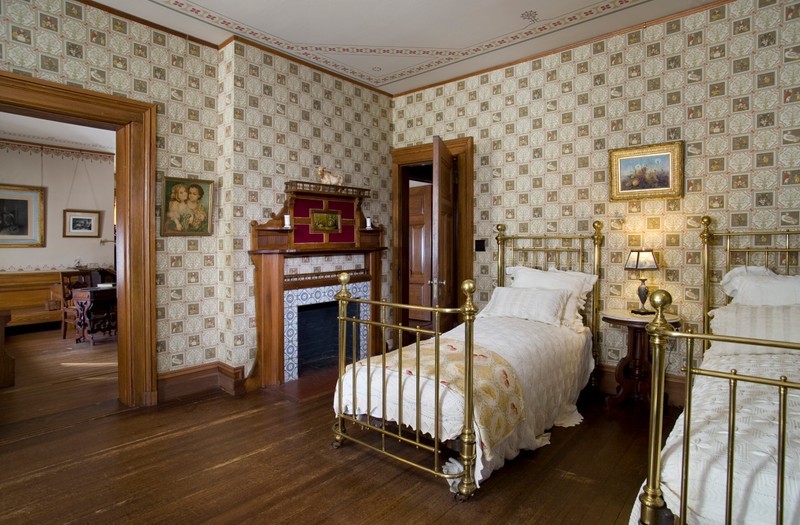
The Conservatory: Referenced as "The Jungle" by the family, housed and abundance of plants and a fountain

The Library: Where the Clemens recited poetry, told stories, and read excerpts from Twain's works
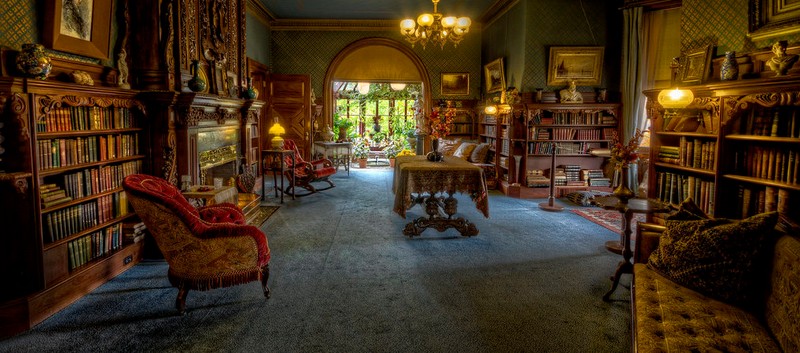
The Mahogany Room: The guest suite, that served as a green room for theatricals and Mrs. Clemens wrapping area for her charities
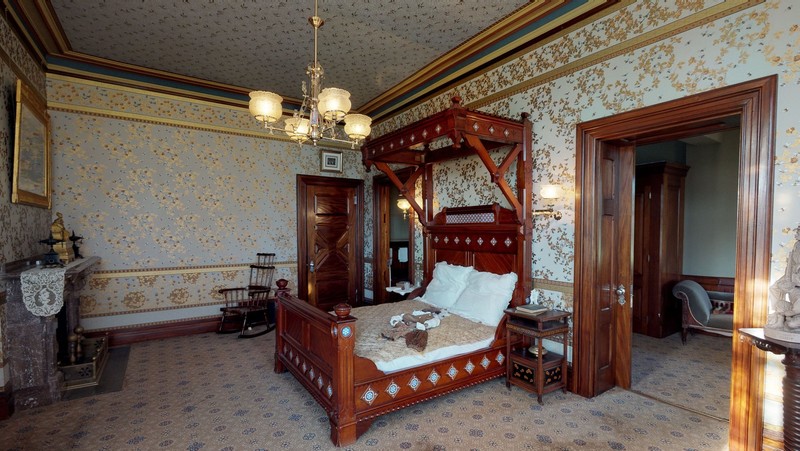
The Billiard Room: Served as Twain's office and study, where he wrote some of his most notable works
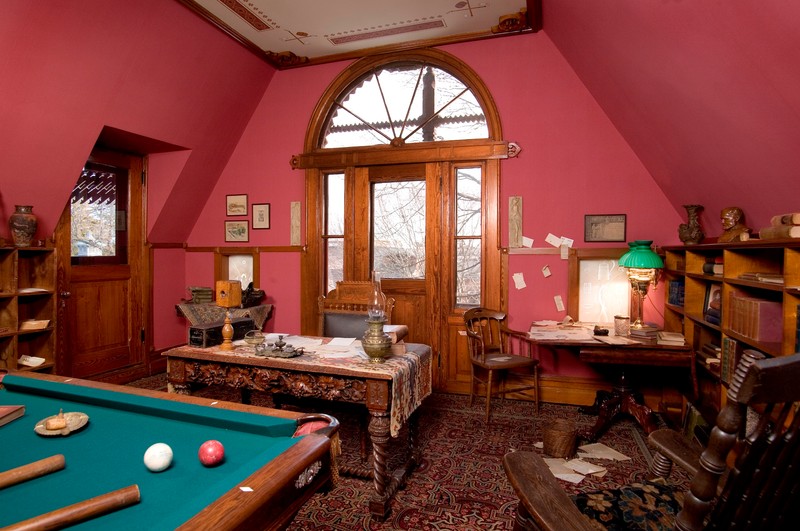
Backstory and Context
Text-to-speech Audio
After Twain and his wife married in 1870, the pair along with their infant son Langdon, moved to the city of Hartford, Connecticut, in which they had already visited several years prior to meet with his publisher Elisha Bliss. For the first few years, the family rented a home in the heart of Nook Farm, a popular area that was home to various writers and publishers. Sadly in 1871, their son passed away from diphtheria. However, that same year, their daughter Susy was born. After several years of renting, Twain and Livy hired architect Edward Tuckerman Potter to commission a house on a lot at Farmington Avenue. Construction began in 1873 and due to the Clemens family frequently traveling, Potter had relatively free reign over the project. The High Victorian Gothic-style house was complete in 1874 and was home to the Clemens family for the next 17 years, although much of the interior work was incomplete. During this time, Livy gave birth to two daughters, Clara and Jean, completing a family of five and it was in these years that Sam published some of his most famous works.
In total, the Clemens spent about $40,000 to $45,000 to build their home. The house measures 11,500 square feet and withholds a total of 25 rooms throughout three floors. The house contained seven bedrooms and seven bathrooms, even including a library, a drawing room, and a billiard room. While Potter designed it, Twain and Livy had previously made sketches for how they wanted the room layouts to be, also supervising the construction themselves. Several elements ended up being changed by Twain. For example, a patch of tin was placed on the roof so that Twain could hear the rain pattering. The dining room fireplace was constructed with a divided flue that rose on each side of a window so he could watch the snow fall. Twain liked to keep updated on new technologies, so the house boasted one of the first telephones in a private home, flush toilets, central heating, hot and cold running water, and a speaking tube intercom system. Most of the interior was inspired and designed from Oriental, Turkish, and Indian styles along with designs from Native American flowers and plants. Because of the intricacy and uniqueness of the structural design, the building ended up being more expensive than predicted.
Although Twain experienced literary success during his years in Hartford, he had several major financial setbacks in the 1890s as he continuously made bad investments, usually related to new and untested inventions. These decisions led him to file for bankruptcy, and soon the house became too expensive to maintain. In an effort to spend less and pay back his debts, Twain relocated his family temporarily to Europe in 1891. After the failure of his publishing company in 1894, Twain set out on a lecture tour to earn an income.
Even after becoming financially stable again, tragedy struck as the youngest daughter Jean was diagnosed with epilepsy in 1896, along with his 24-year-old daughter Susy dying of spinal meningitis while on a visit to the Hartford home. Twain could not bear to live in the house where she passed, so the family never lived in the house again and finally sold it to the Richard Bissell family in 1903. After its purchase, the building changed owners several times.
Richard Bissell was an insurance executive who later served as the president of THe Hartford for several years. He and his wife Mary had three children who grew up in the house. Their son Richard M. Bissell Jr. grew up to become a high-ranking CIA executive during the Cold War who was an important individual in the development of the U-2 spy plane and later was appointed as Deputy Director for Plans in 1959. He spent the first 8 years of his life in the Twain house before Bissell Sr. leased the house the Kingswood School for boys, which Bissell Jr. attended in 1920. However, there was a stipulation in the sale that allowed the school to remain there until 1922. The home was then sold to a developer who had plans to turn it into an apartment building, but after backlash from the public, the interior was divided into 11 apartment units. In 1929, it was purchased again by the Friends of Hartford who intended to demolish the building, but a group called The Mark Twain Memorial and Library Commission was created which acquired the home back and set out to save and restore the property to its original appearance. The restoration of the home began much later, and the organization rented out the first floor of the house to The Mark Twain Branch of the Hartford Public Library. The rest of the home was rented as private apartments through the 1960s.
In 1963, The Mark Twain House was designated as a National Historic Landmark and thus formal restoration began. The main goal of the project was to bring the property back to its original state before the tenants after the Clemens family moved in. The project began with the billiard room and continued with much research and physical investigation with the rest of the house. All major rooms of the house were completed and opened in time for the 100th anniversary in 1974. In 2003, the museum center was finally opened, and the organization was renamed The Mark Twain House & Museum, the new building being the first LEED certified “green” museum in the United States. Restoration of the interior continued up until 2005, and today the entire house is open to the public for tours.
Mark Twain will forever remain as one of the most influential literary figures of the 19th century. While his house has gone through several transformations, it now stands as a remembrance for his legacy and erudite work. Currently, anyone can buy tickets online. The house includes a gift shop and a small café for visitors to enjoy, as well as a new exhibition of 90 objects from the original house and founding organization.
Cite This Entry
Belanger, Grace et. al. "The Mark Twain House & Museum." Clio: Your Guide to History. June 28, 2022. Accessed April 27, 2025. https://theclio.com/tour/755/6
Sources
Hunnicutt, Rachel H. R. “Celebrity or Aesthetics: Interpreting the Billiard Room at the Mark Twain House in Hartford, Connecticut.” Collections 16, no. 2 (June 2020): 177–88. https://doi-org.marshall.idm.oclc.org/10.1177/1550190620903307.
Schroer, Blanche, H. "Mark Twain House", National Register of Historic Places. 8-15-66. https://www.marktwainhouse.org/house/history.php.
Shelley Fisher Fishkin. 2015. Writing America : Literary Landmarks From Walden Pond to Wounded Knee (A Reader’s Companion). New Brunswick, New Jersey: Rutgers University Press. https://search-ebscohost-com.marshall.idm.oclc.org/login.aspx?direct=true&db=e000xna&AN=1070617&site=ehost-live.
Strahan, Derek. “Mark Twain House, Hartford, Connecticut.” Lost New England, June 12, 2019. https://lostnewengland.com/2019/06/mark-twain-house-hartford-connecticut/.
https://marktwainhouse.org/about/the-house/HartfordHome/rooms/
https://marktwainhouse.org/about/the-house/HartfordHome/rooms/
https://marktwainhouse.org/about/the-house/HartfordHome/rooms/
https://marktwainhouse.org/about/the-house/HartfordHome/rooms/
https://marktwainhouse.org/about/the-house/HartfordHome/rooms/
https://marktwainhouse.org/about/the-house/HartfordHome/rooms/
https://marktwainhouse.org/about/the-house/HartfordHome/rooms/
https://marktwainhouse.org/about/the-house/HartfordHome/rooms/
https://marktwainhouse.org/about/the-house/HartfordHome/rooms/
https://marktwainhouse.org/about/the-house/HartfordHome/rooms/

